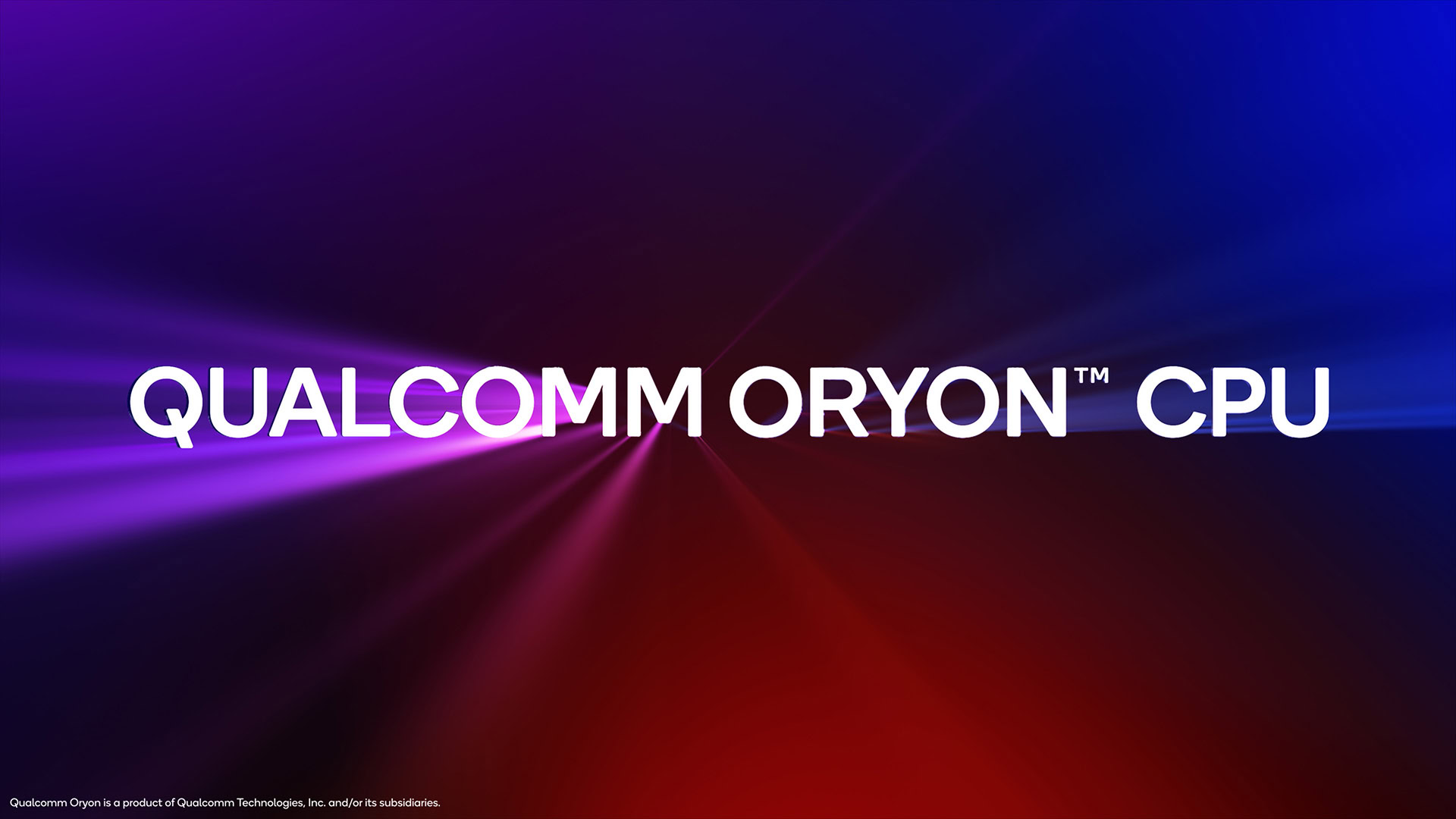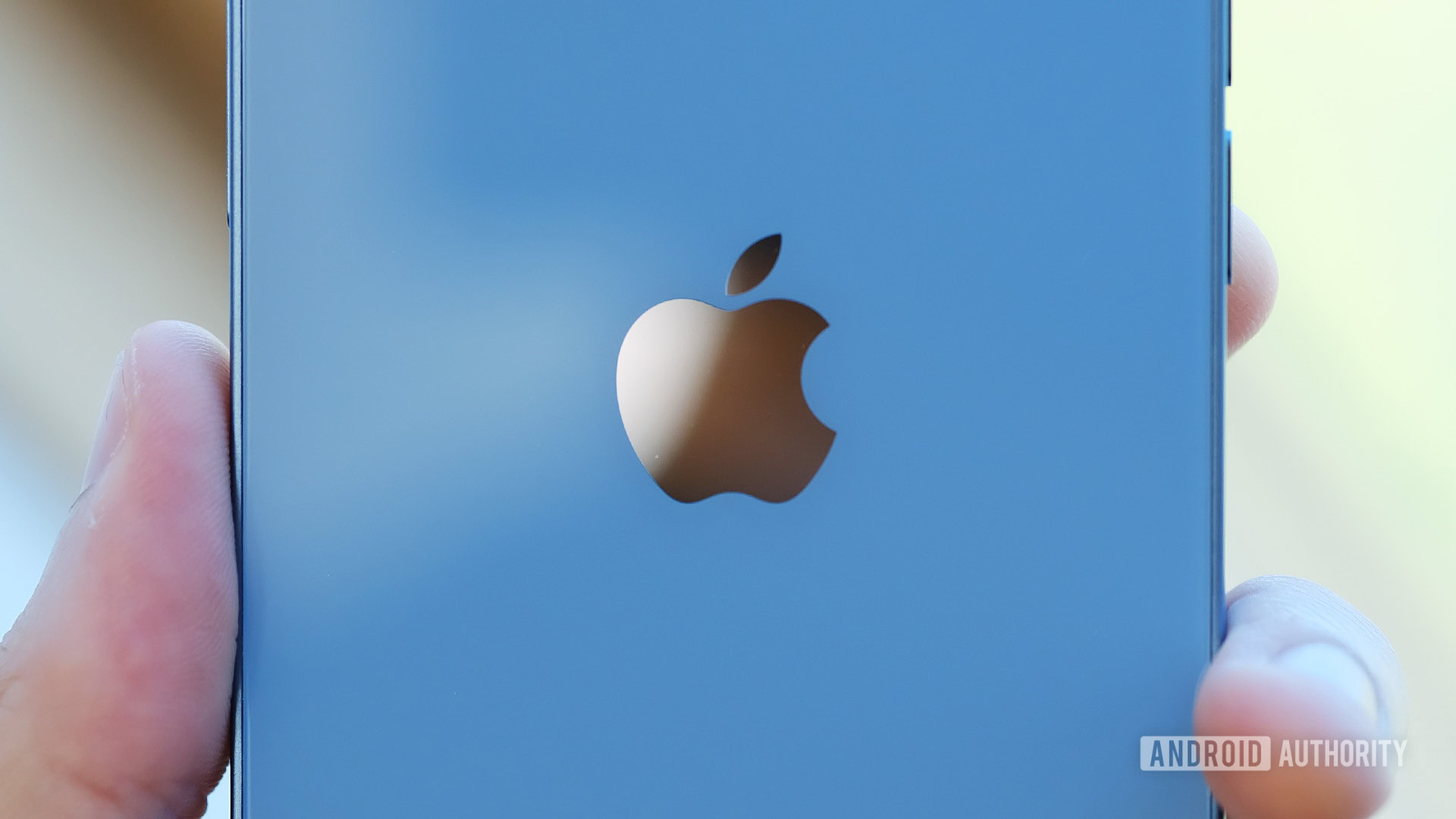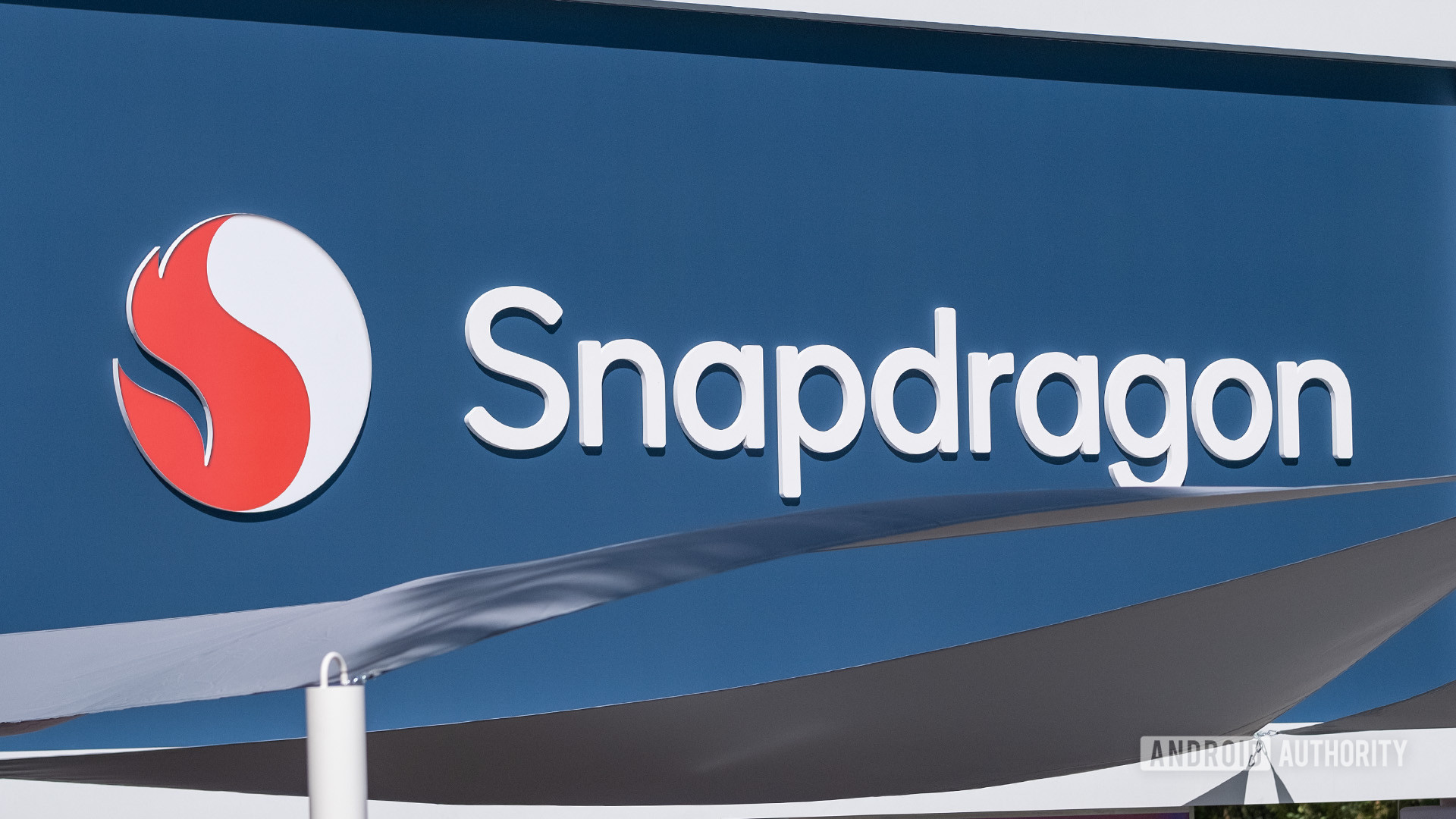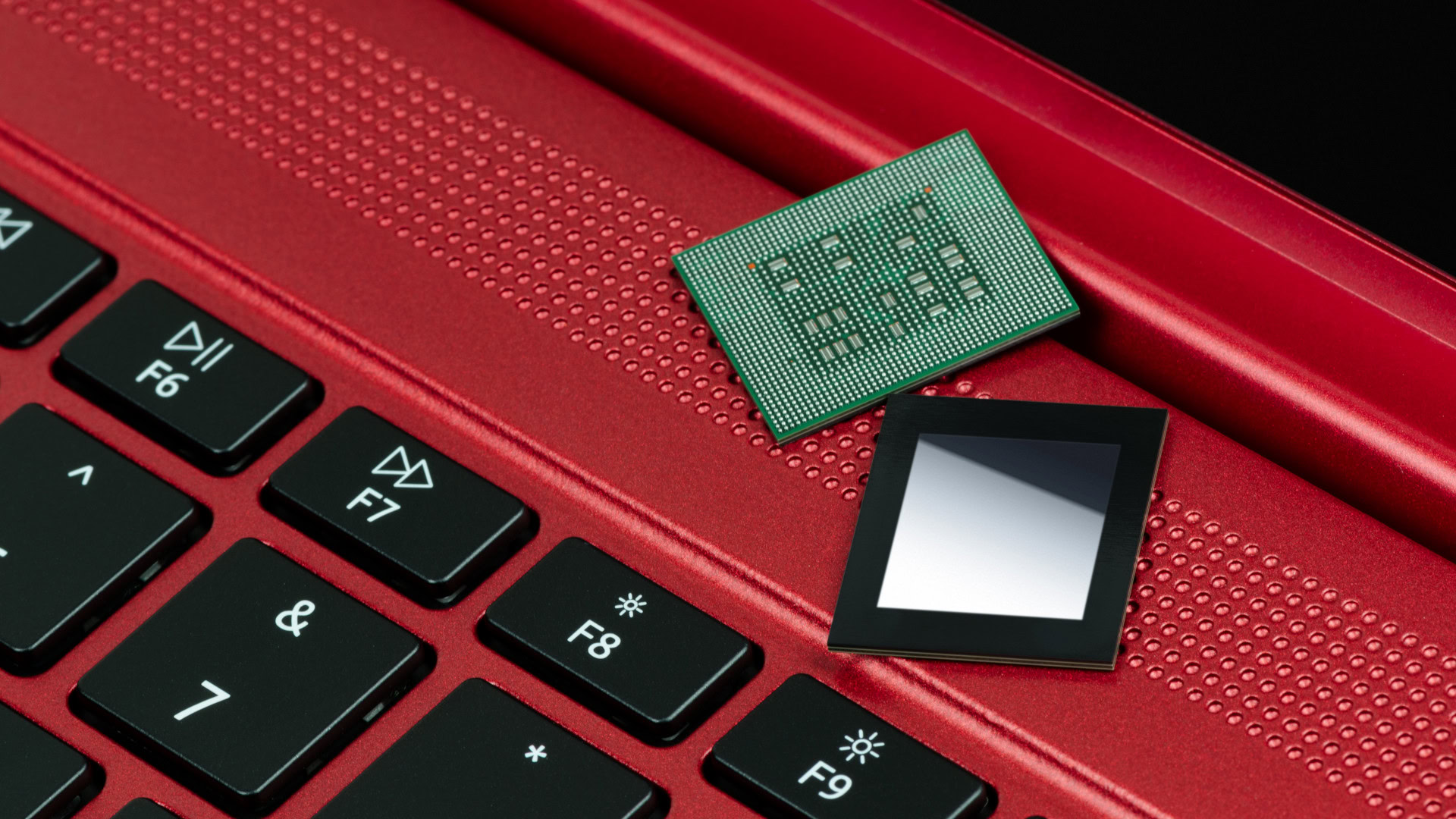
2022 might go down as the year of the tech pre-announcement. First, Google pre-teased its Pixel 7 and Pixel Tablet at I/O. Following its Snapdragon 8 Gen 2 announcement, Qualcomm has shared the name of its next-gen CPU product well ahead of an actual product launch.
Oryon is the name (spellchecker be damned) of Qualcomm’s next CPU, which will eventually replace the long-running Kryo tagline we’ve come to associate with every Qualcomm CPU release since 2015. There’s a good reason for the change in naming convention, though, Oryon represents a major shift in Qualcomm’s computing roadmap and ambitions.
To understand why, you have to appreciate that there are two ways to build an Arm-powered SoC — buy a Cortex CPU design essentially off-the-shelf from Arm or obtain an architecture license and build a compatible CPU from scratch in (virtually) any direction the developer sees fit. While technically an architecture license holder since its Krait CPU days, Qualcomm has been building platforms using Arm’s Cortex-A and Cortex-X CPU designs since 2015, subsumed under its Kryo branding. That’s been very useful for Qualcomm in terms of time to market, particularly in the rush for 64-bit all those years ago, but has somewhat limited the company’s potential when it comes to keeping up with Apple’s CPU compute lead.
Qualcomm’s latest launch: Snapdragon 8 Gen 2 SoC deep dive
That all changes with Oryon. Qualcomm is returning to building its own Arm-based CPUs from the ground up, with the aim of competing with Apple, AMD, and Intel in the high-performance space. With graphics, machine learning, radio, and other bits of silicon under its belt, a custom CPU is the last major component Qualcomm hasn’t been building itself. Going forwards, Snapdragon will be a fully custom piece of kit.
CPUs are essentially the last major component Qualcomm isn’t building itself.
“But why?” is the pertinent question, and, thankfully, Qualcomm’s Senior Vice President of Engineering, Gerard Williams, has provided us with the key insights. During Qualcomm’s Tech Summit keynote, the message was faster, more powerful, and more efficient high-performance CPUs to revolutionize the industry. Simply put, Qualcomm thinks it can build something better in-house. Starting with Windows PCs, Oryon will eventually encompass more Snapdragon platforms, from mobile to XR, compute and beyond.
They won’t say it, but we can. Qualcomm essentially wants to do an Apple, with custom CPUs capable of pushing the envelope of current form factors. Ironically, that’s exactly where the Oryon story began.
Oryon’s history starts with Apple

Robert Triggs / Android Authority
Oryon is actually the brainchild of engineers at Nuvia, a company Qualcomm purchased for $1.4 billion back in early 2021. Nuvia was co-founded by ex-Apple CPU design chief Gerard Williams (now Qualcomm’s Senior VP of Engineering) and former System Architect at Google, John Bruno, in 2019. Qualcomm purchased the company specifically for its custom CPU design expertise, but it’s not the only tech company that’s been keeping a close eye on Nuvia.
During his time at Apple, Williams worked closely on various cores inside Apple A-series SoCs, such as the A12’s Vortex CPU, and on Arm’s Cortex-A18 and A15 CPUs in a prior role. In December 2019, Apple sought to sue Williams, asserting that he started working on Nuvia while still employed by Apple. Williams has since filed a counterclaim.
The lawsuits haven’t ended there, Arm is currently suing Qualcomm over potential licensing agreement breaches as part of the Nuvia acquisition. Arm contests that Qualcomm didn’t obtain its consent to continue work on Nuvia’s custom CPU designs, even though it holds an architecture license of its own. Qualcomm readily acknowledges that it has continued to build on the work of Nuvia over the past year, and separately claims that Arm has no legal provisions to interfere with how it uses acquired Nuvia technology.
The creation of our custom CPU was started by Nuvia engineers while employed at Nuvia and, after the acquisition of Nuvia by Qualcomm Technologies, the custom CPU was completed by engineers at Qualcomm Technologies.
While we’re on the subject of Arm, an architecture license should work out cheaper for Qualcomm in the long term than the per unit cost arrangement it has under its Built on Arm Cortex agreement. Especially given Qualcomm’s shipping volume relative to Arm’s other Built on Arm Cortex partners. However, that estimate is somewhat obfuscated by the increased cost of in-house silicon development, currently $1.4 billion and counting. Either way, it potentially means a fair bit of lost revenue for Arm in the coming years.
However you slice it, a lot of companies are very interested in what the Nuvia team has been up to and its possibility to disrupt the status quo. Qualcomm’s Oryon CPU is the culmination of that effort.
What Oryon means for Qualcomm’s roadmap

Robert Triggs / Android Authority
At the time of acquisition, Nuvia was working on a high-performance Arm-based core for high-performance data centers. Whether or not Qualcomm has continued on that trajectory remains to be seen, but we know that the first Oryon CPU core for consumer-grade products will appear in the computing segment.
In other words, Oryon’s first job is to accelerate the work Qualcomm has done with Windows on Arm in a bid to propel the company firmly into the PC and laptop space. That’s a market currently dominated by AMD and Intel chips, with Apple carving out an Arm-based market for itself too. Qualcomm’s current Snapdragon 8cx Gen 3 platform is still comparatively underpowered in the CPU department and can’t cater to the ultra-demanding content creator and bespoke software crowds.
Qualcomm’s current laptop proposition still centers around multi-day battery life, AI-enhanced applications, and 5G connectivity for business-class users, thanks to its wide range of custom silicon. While those features are nice, a powerful CPU has been the missing piece of the puzzle, and that’s where Oryon aims to come in. Whether it will be powerful enough to catch the Apple M2 remains to be seen. But that’s the target if Qualcomm wants to prove Arm-based PCs are just as viable on Windows too.
Whether Oryon can compete with the Apple M2 will prove whether Arm PCs can replace x86 or not.
But there’s a broader message here too. Qualcomm plans for its Oryon CPU to power Snapdragon platforms from mobile through to laptops. One CPU architecture to rule them all, as it were. Qualcomm hasn’t stated exactly how long it will take to launch a custom smartphone CPU, so we’ll have to watch this space.
If that sounds familiar, that’s essentially what Apple has already done with its Arm architecture license. Apple’s custom CPU designs span its iPhone, iPad, and MacBook product ranges. Undoubtedly, the Oryon branding will have to span a selection of CPUs to cater to all this, much like Kryo does today. Just like Qualcomm’s Hexagon and Adreno architectures scale up and down, Oryon will surely also scale while ensuring common features across product line-ups.
Oryon will power smartphones as well as laptops, eventually.
In some ways, a return to custom CPU architectures for smartphones feels unnecessary. We thought Samsung wise to abandon its admittedly unsuccessful custom CPUs a few years back. We’re already at the point where a phone from the past two years flies through anything you can throw at it. While there might be a desire for more performance, there’s no real need, and Arm’s future Cortex-X components will almost certainly continue to be ample here. However, it makes more sense when viewed in the context of a single, cross-platform computing solution. For starters, Qualcomm will be able to share its CPU-powered features across product segments, as it already does with 5G, imaging, and machine learning. This might include security optimizations, for instance.
Furthermore, there’s a lot Qualcomm can do with a custom architecture license. This could include optimizations to move data between heterogeneous compute elements, such as its CPU-to-DSP or ISP, or focusing more heavily on accelerating machine learning math on the CPU itself. We’ve already seen trends like this in existing Snapdragon products, such as GPU AI math optimizations or directly linking its ISP and Hexagon components in the Snapdragon 8 Gen 2. With more control over the CPU, Qualcomm can, in theory, weave even deeper integration across its Snapdragon platforms and then scale that up and down to suit various product segments. It’s an exciting thought, but those sorts of changes would be well beyond a first-gen custom CPU. One to keep an eye on, then.
We’re still in for a little wait

Supplied by Qualcomm
Although we know virtually nothing about the first Oryon CPU, one thing is very clear; Qualcomm is setting up a lot of its long-term outlook on the success of this chip. The CPU will be instrumental in driving the company’s PC ambitions and could end up providing major differentiation when the design slims its way down for smartphones too. Of course, if it doesn’t work out, Qualcomm always has the option to keep using off-the-shelf Arm parts, like it does today.
Unfortunately, Qualcomm hasn’t stated exactly when Oryon will arrive. The company notes that the CPU will appear in 2023 Snapdragon platforms, but those announcements could still be another year away. We might not see products in consumers’ hands until 2024. We’re in for a bit of a wait, then.



